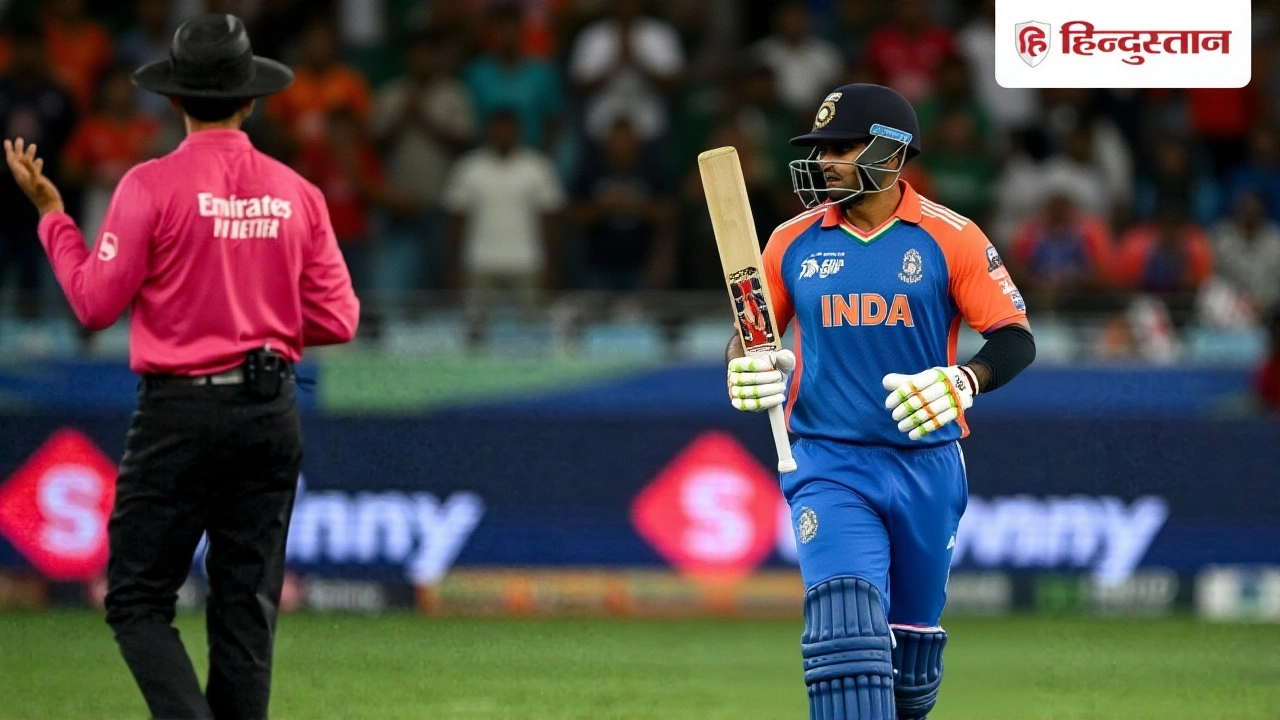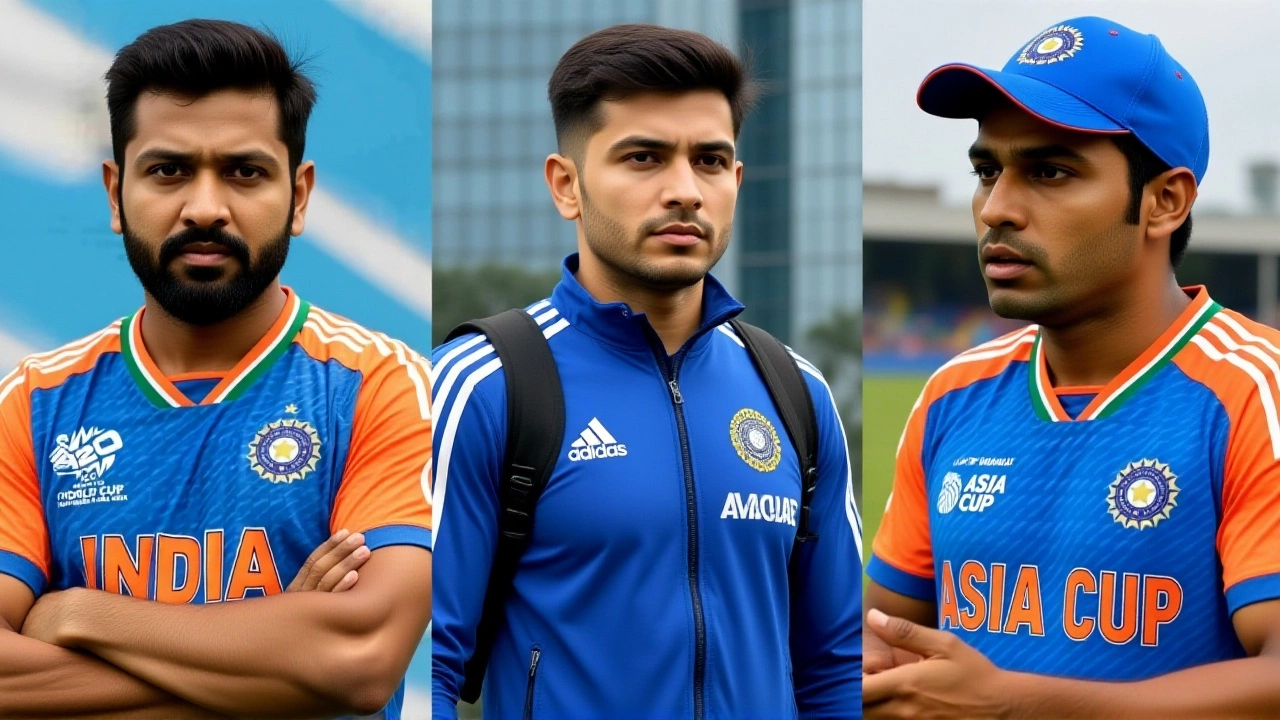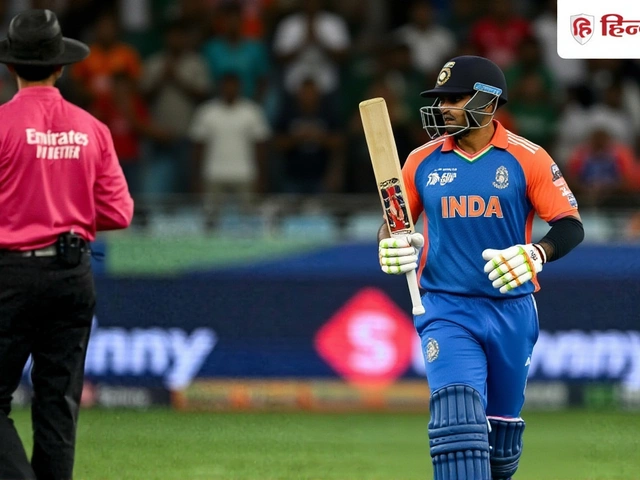Yadav Criticised After Edge Dismissal vs Bangladesh in Asia Cup

When Suryakumar Yadav, captain of India’s T20 side, was caught out on a clear edge against Bangladesh, the cricket world erupted.
The incident unfolded on at Dubai International Stadium during the Super Four stage of the Asia Cup 2025Dubai, United Arab Emirates. Within the 12th over, a series of mis‑steps not only cost India a wicket but also sparked a debate about sportsmanship.
What Went Wrong in the 12th Over?
Bangladesh’s swing bowler Mustafizur Rahman delivered a short ball outside off. Yadav attempted a cut shot toward backward point, where Bangladeshi keeper Rishad Hossain dived and collected the ball cleanly. Meanwhile, opener Abhishek Sharma had already left his crease, assuming a quick single.
Yadav, seeing an opportunity, ordered Sharma to turn back. The runner hesitated, and Hossain’s flat throw hit the stumps at the non‑striker’s end. Sharma was out for 75 off 37 balls, a crushing blow to India’s chase.
On the final ball of the same over, Mustafizur bowled a short delivery on the leg side. Yadav flicked it, the ball glanced off the bottom of his bat, and wicketkeeper Jaker Ali dove spectacularly to his left. The on‑field umpire, however, did not raise his finger despite a loud Bangladeshi appeal. The fielding side immediately initiated a DRS review.
Ultra‑edge technology showed a clean spike, confirming that Yadav’s bat had indeed made contact. He was given out for 5 runs off 11 balls. The replay ignited a firestorm on social media, with fans labeling the episode “unsportsmanlike”.
Social Media Backlash and Fan Sentiment
Within hours, Twitter and Instagram were awash with criticism. One particularly biting comment read, “Yadav just fills the spot, chewing‑gum man is waste guy, last 10 T20Is his avg is below 17. When your seat is booked you don’t need to perform.” The Hindu reported that trending hashtags such as #YadavFail and #BackSharma were dominating the cricket conversation.
Critics also pointed to Yadav’s recent form: scores of 7*, 47*, 0, and the recent 5 all point to a slump that has raised questions about his place in the side. Former players suggested a recall of Shreyas Iyer, mentioning that the team needs a “steady hand” rather than a “flashy captain” in crunch moments.
Governance Issues: ICC Fine and ACC Trophy Controversy
Adding to the drama, the International Cricket Council (ICC) fined Yadav 30 % of his match fees on . The fine stemmed from a tribute he made to the Indian Armed Forces after a group‑stage win over Pakistan on 14 September, which the Pakistan Cricket Board (PCB) deemed “politically charged”. The ICC match referee Richie Richardson upheld the penalty after a formal hearing.
Later, during the final on 28 September, Yadav’s appeal for “obstructing the field” against Pakistan captain Salman Ali Agha was turned down after third‑umpire review. The appeal was widely seen as a desperate attempt to shift momentum.
When India lifted the trophy, Yadav stepped forward to say he would donate all his Asia Cup match fees to the Indian army. Yet the ceremony took a bizarre turn when ACC president Mohsin Naqvi – also chairman of the PCB and interior minister of Pakistan – handed the trophy to the Indian side. Yadav publicly expressed bewilderment, stating, “This is one thing I have never seen since I started playing cricket – a champion team denied a trophy.”
Expert Analysis: What Does This Mean for Indian Cricket?
Cricket analyst Virat Sharma (no relation) told ESPN that the Yadav episode could be a “tipping point” for the Indian board. “When a captain’s decision directly influences a run‑out and then a dismissed edge, it raises questions about leadership under pressure,” he said. Sharma added that the ICC’s fine might set a precedent for “political commentary” penalties, urging players to keep on‑field actions separate from off‑field statements.
Former bowler Kapil Dev commented, “A captain must own his mistakes. If Yadav learns, he’ll come back stronger. If not, the board may have to rethink the combination.”

Broader Implications for the Asia Cup and Future Tournaments
The controversy underscores the growing scrutiny on DRS usage and player conduct. With Ultra‑edge technology now standard, any hint of a missed edge is quickly exposed, forcing umpires and captains to be more cautious. Moreover, the political overtones surrounding the trophy ceremony hint at a future where cricket diplomacy could become as charged as the matches themselves.
Looking ahead, the next major ICC event – the 2026 T20 World Cup in Australia – will likely see heightened vigilance from the governing bodies. Teams will also be reminded that on‑field behaviour can carry off‑field consequences, especially when national sentiments are involved.
Key Takeaways
- Yadav’s edge dismissal sparked intense debate over sportsmanship and DRS reliability.
- Social media backlash highlighted concerns over his recent form and leadership.
- The ICC imposed a 30 % fine for political comments, marking a rare disciplinary move.
- ACC’s trophy‑handing controversy added a diplomatic layer to the sporting narrative.
- Experts warn that future tournaments will be monitored even more closely for conduct and technology use.
Frequently Asked Questions
How did Yadav’s dismissal impact India’s chase against Bangladesh?
The wicket fell at 116/2, tightening the chase. India needed 124 runs from 26 balls; the loss of a set opener (Sharma) and Yadav’s quick dismissal forced the middle order into a high‑pressure situation, ultimately contributing to a narrow three‑run win.
What were the specific reasons for the ICC fine on Yadav?
Richie Richardson ruled that Yadav’s post‑match tribute to the Indian Armed Forces, made after the Pakistan group‑stage win, breached ICC’s code against political statements. The board imposed a 30 % deduction of his match fees as a disciplinary measure.
Why did the ACC president hand the trophy to India, and why was Yadav upset?
ACC president Mohsin Naqvi, also PCB chairman, was scheduled to present the trophy. Yadav felt the ceremony was politicised, noting that a neutral ACC official should have handed the cup, not a Pakistani administrator, which he said denied the champions a proper celebration.
What does this incident mean for the use of DRS in future tournaments?
The clear edge case reinforces the importance of Ultra‑edge technology. Boards are likely to invest in better on‑field video support to reduce reliance on player‑initiated reviews, ensuring more accurate decisions without prolonged delays.
Will Yadav face further sanctions for his on‑field appeal against Agha?
The third‑umpire ruled the appeal frivolous, but no additional penalty was imposed. However, the ICC may monitor future appeals closely, especially if they appear to be strategic rather than genuine.

